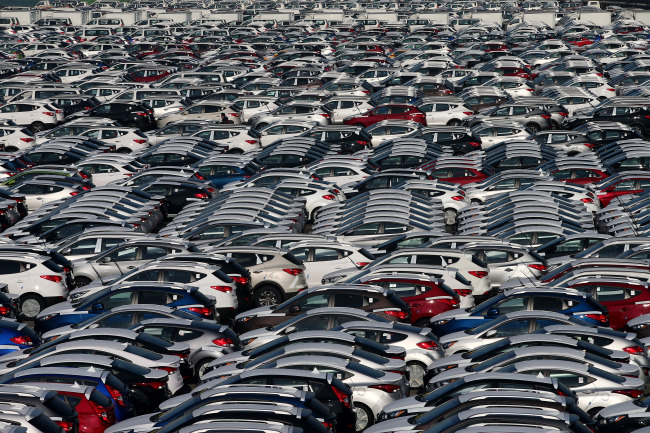Korea plans more checks of vehicles’ fuel efficiency
Three vehicles of same model to be tested for better accuracy
By Korea HeraldPublished : Nov. 13, 2014 - 21:04
The South Korean government is preparing to tighten its oversight of fuel-economy testing so that the ratings on vehicles’ stickers more closely reflect their actual performance.
Three government offices, led by the Ministry of Land, Infrastructure and Transport, said Thursday that they would issue revised guidelines in the coming weeks to elevate the accuracy of the nation’s fuel-efficiency auditing system.
Under the new rules, three vehicles of a new car will be tested to determine their average fuel efficiency. If the discrepancies between the stated and actual ratings exceed 5 percent, three more vehicles will be tested.
Thus far, the government has tested only one vehicle to gauge its gas mileage, citing budget and time constraints.
Three government offices, led by the Ministry of Land, Infrastructure and Transport, said Thursday that they would issue revised guidelines in the coming weeks to elevate the accuracy of the nation’s fuel-efficiency auditing system.
Under the new rules, three vehicles of a new car will be tested to determine their average fuel efficiency. If the discrepancies between the stated and actual ratings exceed 5 percent, three more vehicles will be tested.
Thus far, the government has tested only one vehicle to gauge its gas mileage, citing budget and time constraints.

The Transport Ministry recently took control of the fuel-efficiency audit after years of jostling with the Ministry of Trade, Industry and Energy. Their differing test results had left carmakers unsure about their credibility.
In order to ensure fairness, the ministry also agreed to diversify the testing institutions.
While the initial test will still be conducted by the Transport Ministry-affiliated Korea Automobile Testing and Research Institute, the second will be carried out by the Korea Automotive Technology Institute and Korea Petroleum Quality & Distribution Authority ― the two institutions under of the Trade Ministry’s control.
But the second test will be conducted based on the initial conditions set by the Transport Ministry. The final fuel efficiency will be calculated by averaging the results of the first and second tests.
The ministry will announce the new guidelines within the month. A one-year grace period will take effect so that vehicles developed from 2016 will be subject to the new fuel-efficiency testing rules.
Despite the prospect of improved accuracy, carmakers complain that the Korean government is implementing excessively strict rules in the automotive industry.
Currently, any vehicles driven more than 3,000 kilometers can be tested to earn the mileage rating. But the new rules will limit the driving range between 3,000 and 16,000 kilometers. Ordinarily, vehicles with higher mileages show better fuel efficiency.
The ministry will also limit the use of tires. When a car has three types of tires, the testing will be done using the least fuel-efficient tires. Thus far, carmakers have been allowed to choose any set of tires for the test.
“The ministry is implementing the most conservative testing conditions in the world,” said an industry source on condition of anonymity. “The export-driven Korean carmakers, in particular, will be hit hard.”
The revised rules come as consumers and analysts have been increasingly challenging the accuracy of fuel-economy stickers.
Fueling the confusion, two government offices released different test results for the same cars in June.
The Transport Ministry announced that Hyundai Motor’s Santa Fe and Ssangyong Motor’s Korando Sport had overstated their fuel ratings.
Another test by the Trade Ministry, however, concluded that the ratings were accurate. But the ministry decided to sanction four foreign cars ― the Audi A4, Volskwagen Tiguan, Chrysler Jeep Grand Cherokee and BMW Mini Cooper Countryman ― for overstated fuel ratings.
By Lee Ji-yoon (jylee@heraldcorp.com)
-
Articles by Korea Herald



![[Herald Interview] 'Amid aging population, Korea to invite more young professionals from overseas'](http://res.heraldm.com/phpwas/restmb_idxmake.php?idx=644&simg=/content/image/2024/04/24/20240424050844_0.jpg&u=20240424200058)













![[KH Explains] Korean shipbuilding stocks rally: Real growth or bubble?](http://res.heraldm.com/phpwas/restmb_idxmake.php?idx=652&simg=/content/image/2024/04/25/20240425050656_0.jpg&u=)

